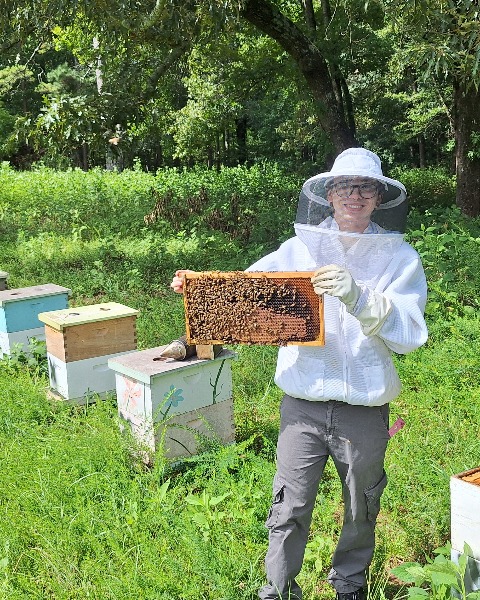Student Poster Display
Medical, Urban, and Veterinary Entomology
Student
Student Competition
D3169: Sugar lockdown: The effects of the COVID-19 pandemic on the honeybee's trophic dynamics

João Pedro Vieira Fornasari (he/him/his)
Visiting Researcher at University of Georgia
University of Georgia
Athens, Georgia
Lewis Bartlett (they/them/theirs)
Assistant Professor
University of Georgia
Athens, Georgia- VE
Vladimir Eliodoro Costa
São Paulo State University
Botucatu, Sao Paulo, Brazil - RC
Raul Costa Pereira
State University of Campinas
Campinas, Sao Paulo, Brazil
Presenting Author(s)
Co-Author(s)
The honeybees (Apis mellifera) primarily consume floral resources but use anthropogenic food as supplementary energy sources. However, we know little about how bees balance their diet with these resources. The COVID-19 lockdown created a singular scenario to study the honeybees’ reliance on human-derived food by temporarily reducing this dietary resource for wildlife in urban settings.
We investigated how the lockdown affected the honeybee`s seasonal trophic dynamics in a tropical city. We expected: (i) bees would rely more on anthropogenic resources during the dry season; and (ii) the lockdown would reduce the contribution of human-derived food to the bees' diet across both seasons. We captured 256 individuals across the wet and dry seasons during and after lockdown (periods a, b, c, and d, respectively) and assessed their foraging decisions by combining stable isotope analysis and statistical modeling.
The honeybees consumed more human-derived food in the dry (Bayesian mixing model, d: 37.1 ± 2.8%) than in the wet season (c: 22.4 ± 2.1%). Even though they did not consume significantly less anthropogenic carbohydrates during lockdown (b: 39 ± 2.4%; a: 26.3 ± 2.4%), they had more homogenous diets in this period (pairwise Tukey test, a: t244 = 3.086, p = 0.0121, b: t244 = 2.909, p = 0.0205). Our findings support that anthropogenic and floral resources shape the honeybee's foraging ecology and large-scale changes in human activity can influence this complex relationship.

.png)

